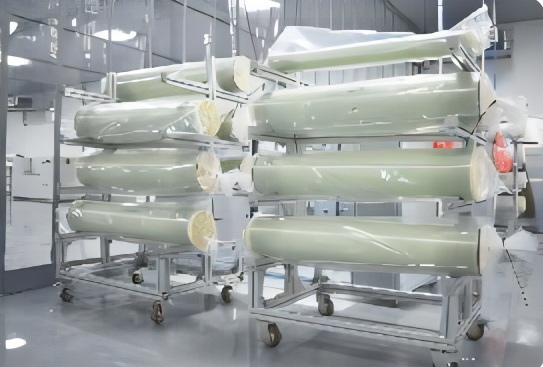Home / News / Exploring the Importance and Advancements in Seawater Desalination Membrane Technology
A seawater desalination membrane is an essential component of the desalination process that allows for the removal of salt and other impurities from seawater. This membrane technology is typically used in a process called reverse osmosis, which is the most widely used method for seawater desalination. The reverse osmosis process uses a high-pressure pump to force seawater through the membrane, which filters out the salt and other impurities, leaving behind fresh water.

SWRO Membrane Extra High Rejection Series SW-8040-440XHR
Advancements in seawater desalination membrane technology have played a critical role in making the desalination process more efficient and cost-effective. In the past, seawater desalination was an expensive and energy-intensive process, but with recent advances in membrane technology, the process has become more affordable and accessible. Membrane technology has made the desalination process more energy-efficient, reducing the amount of energy required to operate the system.
One of the most significant advancements in seawater desalination membrane technology is the development of thin-film composite membranes. These membranes are made from a thin film of a polymer material, which is layered over a thicker porous support layer. The thin film layer is responsible for removing the salt and other impurities from the seawater, while the porous support layer provides structural support and allows for the flow of water through the membrane. Thin-film composite membranes have improved the efficiency of the desalination process and reduced the cost of production.
Another area of advancement in seawater desalination membrane technology is the development of anti-fouling membranes. Fouling is a common problem in desalination systems, where impurities in the seawater can build up on the surface of the membrane, reducing its effectiveness. Anti-fouling membranes are designed to resist the build-up of impurities and prolong the life of the membrane. This innovation has reduced maintenance costs and improved the overall efficiency of the desalination process.
In addition to improving the performance of seawater desalination membranes, researchers are also exploring new materials for membrane construction. For example, graphene, a two-dimensional carbon material, has shown promising results as a membrane material for desalination. Graphene has unique properties that make it an ideal material for membrane construction, including its high surface area, strength, and permeability. The use of graphene membranes in desalination could lead to even more efficient and cost-effective desalination processes.
Despite the advancements in seawater desalination membrane technology, there are still challenges that need to be addressed. The desalination process is energy-intensive and requires a significant amount of electricity to operate. The high energy requirements have made it difficult to scale up desalination plants to meet the growing demand for fresh water. To overcome this challenge, researchers are exploring new methods of energy recovery, such as using renewable energy sources like solar power or integrating desalination plants with existing power plants.
If you want to know more information about seawater desalination membrane, please contact us. We will provide professional answers.